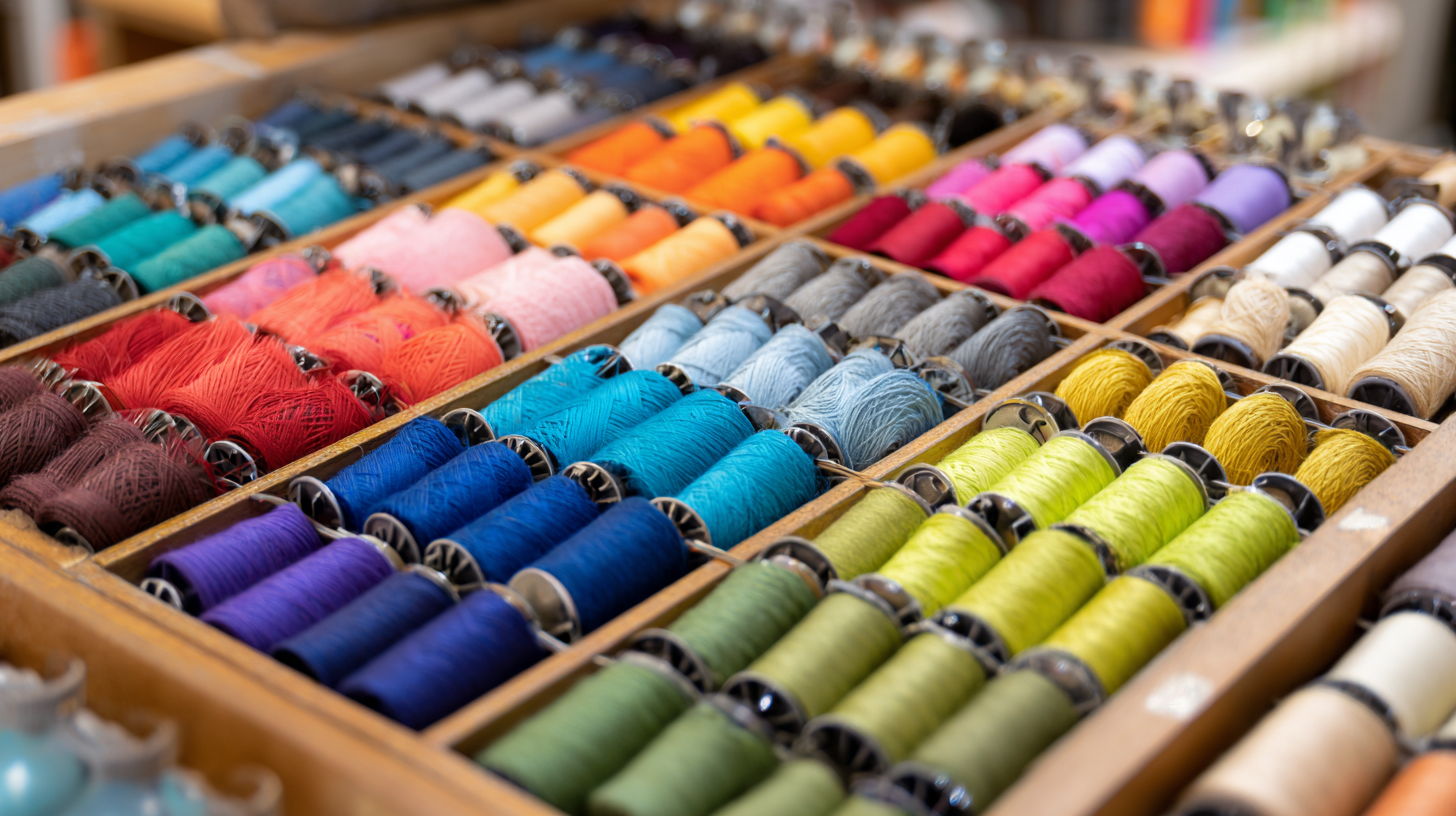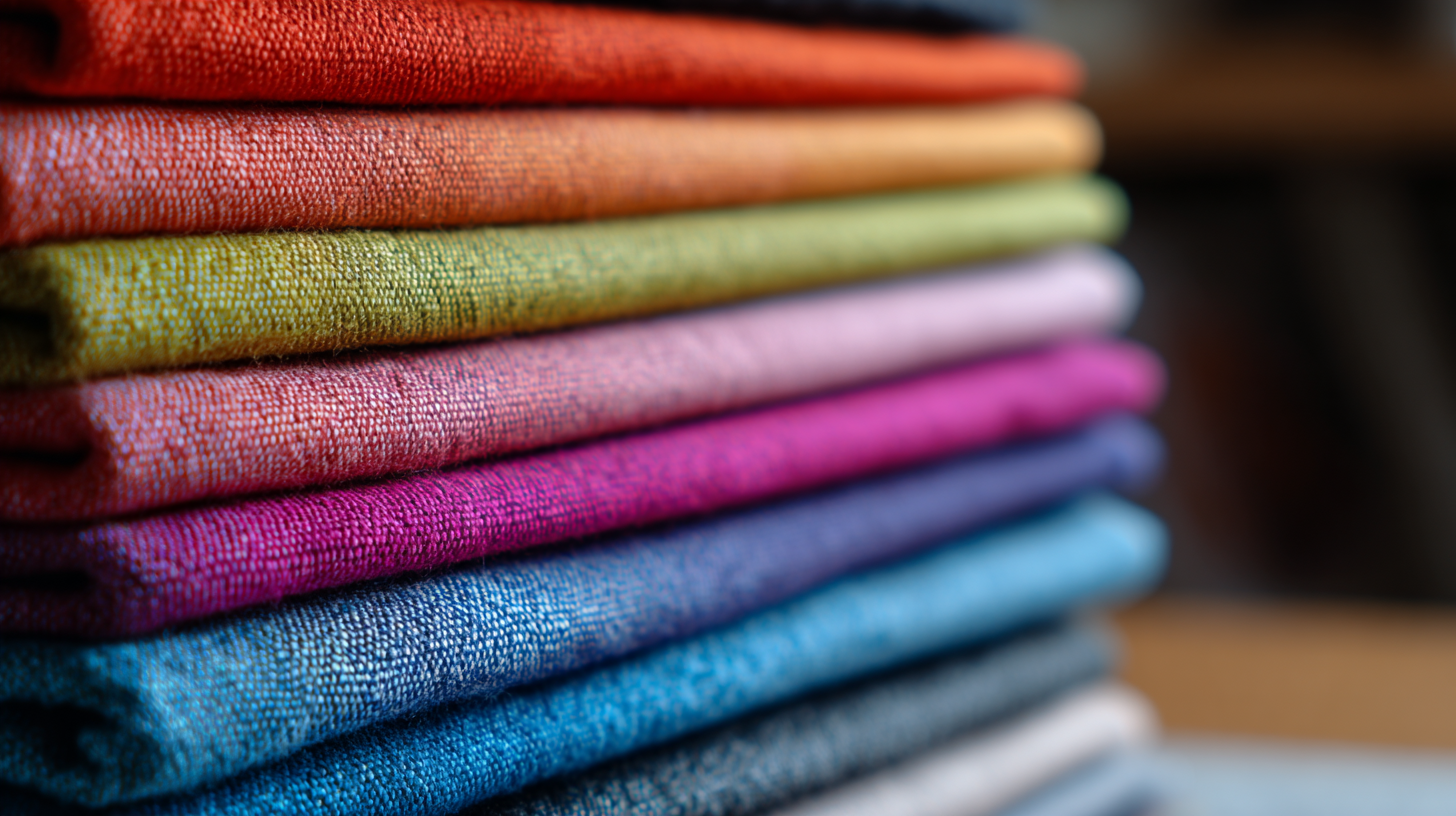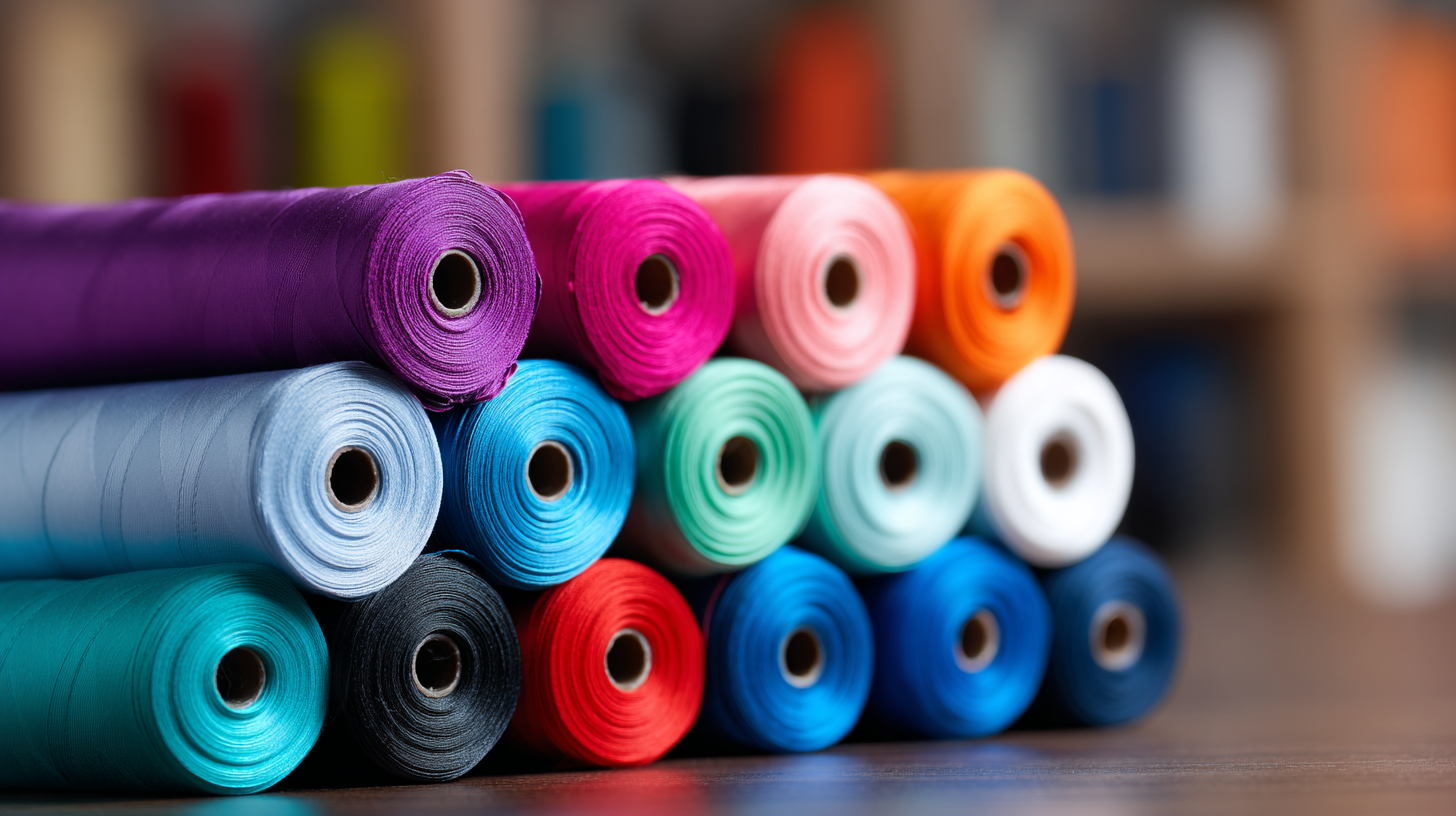- +86 13957580925
- 510515850@qq.com
- adela0928@163.com
In the evolving landscape of textile production, the importance of selecting the right materials for sewing projects cannot be overstated. Sewing Polyester has emerged as a favorite among both amateur and professional sewers due to its durability, versatility, and cost-effectiveness. According to a recent report by the Textile Industry Association, the global demand for polyester fabrics has witnessed a substantial increase, projected to grow by over 10% in the coming years, driven by innovation in manufacturing and sustainable practices. 中国智造, or "Made in China," continues to dominate the global market, exporting high-quality sewing polyester that meets international standards. As sewing enthusiasts and professionals seek to enhance the quality and longevity of their creations, mastering the art of choosing the best sewing polyester is crucial for achieving exceptional results in any project.

As we approach 2025, the sewing industry is witnessing a significant shift towards sustainable materials, particularly in the use of sewing polyester. This trend is driven by increasing consumer awareness of environmental issues and a growing demand for eco-friendly alternatives. Manufacturers are now focusing on creating polyester fabrics from recycled materials, helping to reduce waste and promote a circular economy in the textile industry. By opting for sustainable sewing polyester, sewists can contribute to a healthier planet while enjoying the same versatility and durability that traditional polyester offers.
Additionally, advancements in technology are paving the way for innovative sustainable fabrics. New production processes are not only making the recycling of polyester more efficient but also enhancing the overall quality of the material. These developments are evidence of a broader trend towards responsible sourcing and production in the fashion and sewing sectors. As sewing enthusiasts embrace these eco-friendly options, they are not only expressing their creativity but also making a statement about their values, aligning their projects with a sustainable future. Keeping an eye on these trends will be essential for anyone looking to stay ahead in the rapidly evolving world of sewing.
When diving into the world of sewing, the choice of fabric can make or break your projects. High-quality sewing polyester is a polymer fabric that boasts durability, versatility, and a range of finishes suitable for various sewing undertakings. It is essential to understand the characteristics that define good polyester to ensure your creations last.
One of the primary features to look for is the fabric's tensile strength. Quality polyester resists tearing and fraying, allowing you to craft garments and home decor items that withstand regular use. Additionally, a fine weave enhances the overall texture and can provide a more polished look. A tip for choosing the right polyester is to feel the fabric in-store; high-grade polyester should have a smooth, consistent texture without any irregularities.
Another critical characteristic is colorfastness. Quality sewing polyester should retain its vibrant hues even after multiple washes, preventing fading over time. When selecting fabric, opt for brands that offer color specifications or testing certifications. A handy tip is to wash a small swatch before committing to a larger piece, ensuring it meets your expectations for durability and appearance.
When selecting the right sewing polyester for your projects, it’s essential to consider the specific requirements of each type of fabric. According to a report by the Textile Research Journal, polyester threads are known for their exceptional strength, durability, and low moisture absorption, making them suitable for a variety of applications. For everyday sewing or home décor projects, a medium-weight polyester, typically ranging from 60 to 80 denier, strikes a balance between durability and ease of handling.

For specialized projects such as athletic wear or swimwear, choosing a lightweight and stretchable polyester blend is vital. The American Textile Manufacturers Institute notes that elastane blends enhance flexibility, allowing garments to move with the wearer. This is particularly important in performance apparel, where breathability and moisture-wicking properties are critical. Always consider the fabric weight and stretchability based on the intended usage; lightweight polyesters (30-50 denier) are optimal for flowy dresses, while heavier weights (100 denier and above) are more suited for structured garments or outdoor gear.
When it comes to sewing, choosing the right fabric can significantly impact the outcome of your project. Polyester, a synthetic fabric, has gained popularity in the sewing industry, often standing out in comparisons with natural fabrics like cotton and linen. One of the primary advantages of using polyester is its durability; it resists stretching, shrinking, and wrinkling, making it an excellent choice for garments that need to withstand daily wear and tear. Additionally, polyester fabrics tend to retain their color well, ensuring that your creations maintain their vibrant appearance over time, even after repeated washes.
In contrast, natural fabrics such as cotton and linen offer breathability and comfort, making them suitable for specific applications like summer clothing. However, they may not hold up as well in terms of durability and maintenance. For example, cotton can shrink significantly when washed, and linen often requires more care to avoid wrinkles. While both types of fabrics have their merits, polyester stands out for projects that demand longevity and ease of care. Understanding these differences can help sewists make informed decisions, optimizing their projects to achieve the best results.

The world of sewing polyester is poised for exciting innovations that promise to revolutionize crafting. According to a report from the Textile Exchange, the global polyester market is expected to reach 320 billion USD by 2025, driven largely by advancements in manufacturing processes and sustainability efforts. As brands increasingly prioritize eco-friendly materials, innovations in recycled polyester technology are set to transform everyday sewing projects.
The development of methods to convert plastic waste into high-quality sewing polyester not only addresses environmental concerns but also opens avenues for cost-effective crafting solutions.
In addition to sustainability, smart textiles are on the horizon, integrating technology into sewing polyester. A report by Market Research Future predicts a significant rise in “smart fabric” adaptations by 2028, incorporating features such as temperature regulation and moisture-wicking capabilities. These innovations will not only enhance comfort and functionality but also expand the creative possibilities for crafters. With the integration of such technologies, sewing enthusiasts can look forward to materials that not only beautify their projects but also provide added value, making the art of sewing more versatile than ever.
